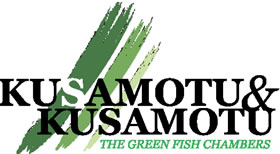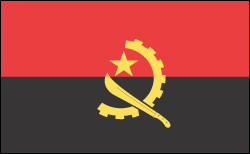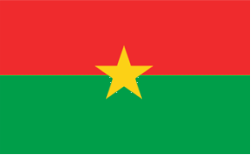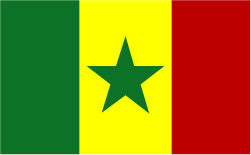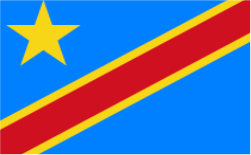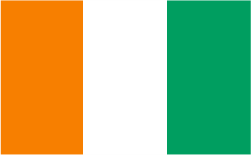Law Firms that KK collaborates with within Africa.
Kusamotu & Kusamotu has partners in most countries in Africa that handles legal matters in various laws such as Labour, Family, Criminal, Litigation, Real property law, Contract law, Tort law, Company and Commercial law.
We have years of experience representing clients in legal proceedings, providing legal advice, executing legal transactions and in litigation areas. We have excellent communication and negotiation skills and client service abilities.
We assist clients in learning about their rights and obligations concerning business transactions.
We also study complex legal cases and summarise them for concerned authorities or courts.
- ANGOLA
- BENIN REPUBLIC
- BURKINA FASO
- CAMEROON
- DRC & CONGO
- COTE D'IVORE
- GHANA
- MALI
- KENYA
- MAURITANIA
- MOZAMBIQUE
- SENEGAL
- SUDAN/SOUTH SUDAN
- TANZANIA
- TOGO
- UGANDA
- ZAMBIA
- ZIMBABWE
- GUINEA
- SOUTH AFRICA
ANGOLA
Angola is a country in South-western Africa.
Kusamotu & Kusamotu has partners in Angola that handle legal matters in various laws such as Labour, Family, Criminal, Litigation, Real property law, Contract law, Tort law, Company and Commercial law.
We have years of experience representing clients in legal proceedings, providing legal advice, executing legal transactions and in litigation areas. We have excellent communication and negotiation skills and client service abilities.
We assist clients in learning about their rights and obligations concerning business transactions.
We also study complex legal cases and summarise them for concerned authorities or courts.
SPOKEN LANGUAGES
Portuguese, English, Humbundu, and a little French.
The Republic of Benin was formed in 1960 when the colony of French Dahomey gained independence from France. Prior to this, the area that is now the Republic of Benin was divided largely between two coastal kingdoms, Dahomey and Porto-Novo, and a large area of various tribes in the north.
The French assembled these various groups together into the colony of French Dahomey, which was part of the various colonies of French West Africa from 1904 until 1960. In the independence era, the republic was extremely unstable for the first decade and a half of existence, with multiple governments and multiple military coups.
In 1972, Mathieu Kérékou led a military coup deposing the Presidential Council and appointing himself as the head of state, a position he held until 1991 when the country returned to multiparty elections. Since that point, the state has held multiple presidential and legislative elections and a number of different parties have become important.
BENIN REPUBLIC
OlgaAnasside etNicolin Assogba
(Mme Olga Anasside)
Tel: (+229) 976 86967, (+22)9213 23861
BURKINA FASO
Recent archeological discoveries at Bura in southwest Niger and in adjacent southwest Burkina Faso have documented the existence of the iron-age Bura culture from the 3rd century to the 13th century. The Bura-Asinda system of settlements apparently covered the lower Niger River valley, including the Bura region of Burkina Faso. Further research is needed to understand the role this early civilization played in the ancient and medieval history of West Africa.
Loropéni is a pre-European stone ruin which was linked to the gold trade. It has been declared as Burkina Faso’s first World Heritage site.
From medieval times until the end of the 19th century, the region of Burkina Faso was ruled by the empire-building Mossi people, who are believed to have come up to their present location from northern Ghana, where the ethnically-related Dagomba people still live. For several centuries, Mossi peasants were both farmers and soldiers. During this time the Mossi Kingdoms successfully defended their territory, religious beliefs and social structure against forcible attempts at conquest and conversion by their Muslim neighbours to the northwest.
STEPHANE MARIE IBRAHIM OUEDRAOGO
Tel: (+226) 651 424 28
(+226) 780 909 49
002 257 809 946
CAMEROON
The earliest inhabitants of Cameroon were probably the Baka (Pygmies). They still inhabit the forests of the south and east provinces. Bantu speakers originating in the Cameroonian highlands were among the first groups to move out before other invaders. The Mandara kingdom in the Mandara Mountains was founded around 1500 and erected fortified structures, the purpose and exact history of which are still unresolved. The Aro Confederacy of Nigeria had presence in western (later called British) Cameroon due to trade and migration in the 18th and 19th centuries.
During the late 1770s and the early 19th century, the Fulani, a pastoral Islamic people of the western Sahel, conquered most of what is now northern Cameroon, subjugating or displacing its largely non-Muslim inhabitants.
Although the Portuguese arrived on Cameroon’s doorstep in the 16th century, malaria prevented significant European settlement and conquest of the interior until the late 1870s, when large supplies of the malaria suppressant, quinine, became available. The early European presence in Cameroon was primarily devoted to coastal trade and the acquisition of slaves. The northern part of Cameroon was an important part of the Muslim slave trade network. The slave trade was largely suppressed by the mid-19th century. Christian missionaries established a presence in the late 19th century and continue to play a role in Cameroonian life.
CONGO & DRC
The region that is now the Democratic Republic of the Congo was first settled about 80,000 years ago. Bantu migration arrived in the region from Nigeria in the 7th century AD. The Kingdom of Kongo remained present in the region between the 14th and the early 19th centuries. Belgian colonization began when King Leopold II founded the Congo Free State, a corporate state run solely by King Leopold. Reports of widespread murder and torture in the rubber plantations led the Belgian government to seize the Congo from Leopold II and establish the Belgian Congo. Under Belgian rule, the colony was run with the presence of numerous Christian organizations that wanted to westernize the Congolese people.
After an uprising by the Congolese people, Belgium granted the Congo its independence in 1960. However, the Congo was left unstable because tribal leaders had more power than the central government. Prime Minister Patrice Lumumba tried to restore order with the aid of the Soviet Union as part of the Cold War, causing the United States to support a coup led by Colonel Joseph Mobutu in 1965. Mobutu quickly seized complete power of the Congo and renamed the country Zaire. He sought to Africanize the country, changing his own name to Mobuto Sese Seko, and demanded that African citizens change their Western names to traditional African names. Mobuto sought to repress any opposition to his rule, in which he successfully did throughout the 1980s. However, with his regime weakened during the early 1990s, Mobuto was forced to agree to a power-sharing government with the opposition party. Mobuto remained the head of state and promised elections for the next two years that never happened.
In the First Congo War, Rwanda invaded Zaire, which overthrew Mobuto during the process. Laurent-Desire Kabila later took power and renamed the Democratic Republic of the Congo. After a disappointing rule under Kabila, the Second Congo War broke out, resulting in a regional war with many different African nations taking part. Kabila was assassinated by his bodyguard in 2001, and his son, Joseph, succeeded him and was later elected president by the Congolese government in 2006. Upon taking office, Kabila quickly sought peace, ending the era of war in Africa. Soldiers were left in the Congo for a few years and a power-sharing government between Kabila and the opposition party was set up. Kabila later resumed complete control over the Congo and was re-elected in a disputed election in 2011. Today, the Congo remains dangerously unstable.
COTE D' IVOIRE
The date of the first human presence in Ivory Coast (officially called Côte d’Ivoire) has been difficult to determine because human remains have not been well preserved in the country’s humid climate. However, the presence of old weapon and tool fragments (specifically, polished axes cut through shale and remnants of cooking and fishing) in the country has been interpreted as a possible indication of a large human presence during the Upper Paleolithic period (15,000 to 10,000 BC), or at the minimum, the Neolithic period. The earliest known inhabitants of Côte d’Ivoire, however, have left traces scattered throughout the territory. Historians believe that they were all either displaced or absorbed by the ancestors of the present inhabitants. Peoples who arrived before the 16th century include the Ehotilé (Aboisso), Kotrowou (Fresco), Zéhiri (Grand Lahou), Ega and Diès (Divo).
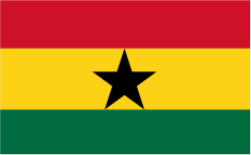
The Republic of Ghana is named after the medieval West African Ghana Empire. The Empire became known in Europe and Arabia as the Ghana Empire after the title of its emperor, the Ghana. The Empire appears to have broken up following the 1076 conquest by the Almoravid General Abu-Bakr Ibn-Umar. An elevated kingdom continued to exist after Almoravid rule ended, and the kingdom was later incorporated into subsequent Sahelian empires, such as the Mali Empire several centuries later. Geographically, the ancient Ghana Empire was approximately 500 miles (800 km) north and west of the modern state of Ghana, and controlled territories in the area of the Sénégal River and east towards the Niger rivers, in modern Senegal, Mauritania and Mali.
For most of central sub-Saharan Africa, agricultural expansion marked the period before 500 AD. Farming began earliest on the southern tips of the Sahara, eventually giving rise to village settlements. Toward the end of the classical era, larger regional kingdoms had formed in West Africa, one of which was the Kingdom of Ghana, north of what is today the nation of Ghana. Before its fall at the beginning of the 10th century Ashanti migrants moved southward and founded several nation-states, including the first empire of Bono founded in the 11th century and for which the Brong-Ahafo of Ashantiland is named. Later Akan ethnic groups such as the Ashanti empire-kingdom and Fante states are thought to possibly have roots in the original Bono settlement at Bono manso. Much of the area was united under the Empire of Ashanti by the 16th century. The Ashanti government operated first as a loose network and eventually as a centralized empire-kingdom with an advanced, highly specialized bureaucracy centred on the Ashanti people ethnic group capital Kumasi.
MALI
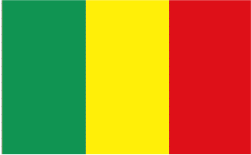
The history of the territory of modern Mali may be divided into:
Pre-Imperial Mali, before the 13th century the history of the eponymous Mali Empire and of the Songhai Empire during the 13th to 16th centuries.
The borders of Mali are those of French Sudan, drawn in 1891. They are artificial, and unite part of the larger Sudan region with parts of the Sahara. As a consequence, Mali is a multiethnic country, with a majority of its population consisting of Mandé people.
Mali’s history is dominated by its role in trans-Saharan trade, connecting West Africa and the Maghreb. The Malian city Timbuktu is exemplary of this – situated on the southern fringe of the Sahara and close to the River Niger, it has played an important role in the trans-Saharan trade from the 13th century with the establishment of the Mali Empire.
The Mali Empire became Islamic in the early 14th century, under Musa I of Mali. From that time until the 19th century, Timbuktu remained important as an outpost at the south-western fringe of the Muslim world and a hub of the Arab slave trade.
Mandinka from c. 1230 to c. 1600. The empire was founded by Sundiata Keita and became known for the wealth of its rulers, especially Mansa Musa I. The Mali Empire had many profound cultural influences on West Africa, allowing the spread of its language, laws and customs along the Niger River. It extended over a large area and consisted of numerous vassal kingdoms and provinces.
The Mali Empire began to weaken in the 15th century, but it remained dominant for much of the 15th. It survived into the 16th century, but by then had lost much of its former strength and importance.
KENYA
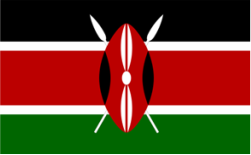 A part of Eastern Africa, the territory of what is now Kenya has seen human habitation since the beginning of the Lower Paleolithic. The Bantu expansion from a West African centre of dispersal reached the area by the 1st millennium AD. With the borders of the modern state at the crossroads of the Bantu, Nilo-Saharan and Afro-Asiatic ethno-linguistic areas of Africa, Kenya is a truly multi-ethnic state.
A part of Eastern Africa, the territory of what is now Kenya has seen human habitation since the beginning of the Lower Paleolithic. The Bantu expansion from a West African centre of dispersal reached the area by the 1st millennium AD. With the borders of the modern state at the crossroads of the Bantu, Nilo-Saharan and Afro-Asiatic ethno-linguistic areas of Africa, Kenya is a truly multi-ethnic state.
The European and Arab presence in Mombasa dates to the Early Modern period, but European exploration of the interior began only in the 19th century. The British Empire established the East Africa Protectorate in 1895, from 1920 known as the Kenya Colony.
The independent Republic of Kenya was formed in 1964. It was ruled as a de facto one-party state by the Kenya African National Union (KANU), which was an alliance led by Jomo Kenyatta during 1963 to 1978. Kenyatta was succeeded by Daniel arap Moi, who ruled until 2002. Moi attempted to transform the de facto one-party status of Kenya into a de jure status during the 1980s, but with the end of the Cold War, the practices of political repression and torture which had been “overlooked” by the Western powers as necessary evils in the effort to contain communism were no longer tolerated.
Moi came under pressure, notably by US ambassador Smith Hempstone, to restore a multi-party system, which he did by 1991. Moi won elections in 1992 and 1997, which were overshadowed by political killings on both sides. During the 1990s, evidence of Moi’s involvement in human rights abuses and corruption (Goldenberg scandal) was uncovered. He was constitutionally barred from running in the 2002 election, which was won by Mwai Kibaki. Widely reported electoral fraud on Kibaki’s side in the 2007 elections resulted in the 2007–2008 Kenyan crisis. After that Kenya was succeeded by Uhuru Kenyatta in the 2013 elections.
MAURITANIA
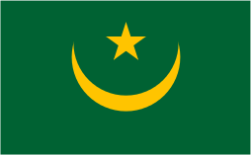
The original inhabitants of Mauritania were the Bafour, presumably a Mande ethnic group, connected to the contemporary Arabized minor social group of Imraguen (“fishermen”) on the Atlantic coast.
The territory of Mauritania was on the fringe of geographical knowledge of Libya in classical antiquity. Berber immigration took place from about the 3rd century. Mauritania takes its name from the ancient Berber kingdom and later Roman province of Mauretania, and thus ultimately from the Mauri people, even though the respective territories do not overlap, historical Mauritania being considerably further north than modern Mauritania.
The Muslim conquest of the Maghreb in the 7th and 8th centuries did not reach as far south, and Islam came to Mauritania only gradually, from about the 11th century, in the context of the wider Islamization of the Sudan and medieval Arab slave trade.
The European colonial powers of the 19th century had little interest in Mauritania. The French Republic was mostly interested in the territory for strategic reason, as a connection between their possessions in North and in West Africa. Mauritania thus became part of French West Africa in 1904, but colonial control was mostly limited to the coast and the Saharan trade routes, and there were territories nominally within French West Africa which were not reached by European control as late as 1955.
In 1960, the Republic of Mauritania became independent of France. The conflict over the former Spanish territory of Western Sahara in 1976 resulted in partial annexation by Mauritania, withdrawn in favour of Morocco in 1979. The long-serving dictator Maaouya Ould Sid’Ahmed Taya was ousted by the military of Mauritania and replaced by the Military Council for Justice and Democracy in a coup d’état in 2005. A new constitution was passed in 2006. An indecisive election in 2007 triggered another coup in 2008. A leader of the 2005 coup, Mohamed Ould Abdel Aziz, was elected president in 2009.
MOZAMBIQUE
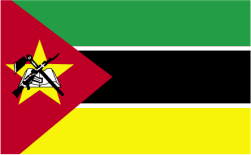 Mozambique was a Portuguese colony, overseas province and later a member state of Portugal. It gained independence from Portugal in 1975.
Mozambique was a Portuguese colony, overseas province and later a member state of Portugal. It gained independence from Portugal in 1975.
In 2007, Julio Mercader, of the University of Calgary, recovered dozens of 100,000-year-old stone tools from a deep limestone cave near Lake Niassa in Mozambique showing that wild sorghum, the ancestor of the chief cereal consumed today in sub-Saharan Africa for flours, breads, porridges and alcoholic beverages, was being consumed by Homo sapiens along with African wine palm, the false banana, pigeon peas, wild oranges and the African “potato.” This is the earliest direct evidence of humans using pre-domesticated cereals anywhere in the world.
The first inhabitants of what is now Mozambique were the San hunters and gatherers, ancestors of the Khoisani people. Between the 1st and 5th centuries AD, waves of Bantu-speaking people migrated from the north through the Zambezi River valley and then gradually into the plateau and coastal areas. The Bantu were farmers and ironworkers.
SENEGAL
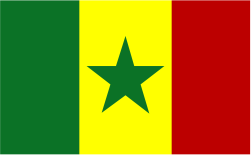
The history of Senegal is commonly divided into a number of periods, encompassing the pre-historic era, the pre-colonial period, colonialism, and the contemporary era.
The earliest evidence of human life is found in the valley of the Falémé in the south-east.
The presence of man in the Lower Paleolithic is attested by the discovery of stone tools characteristic of Acheulean such as hand axes reported by Théodore Monod at the tip of Fann in the peninsula of Cap-Vert in 1938, or cleavers found in the south-east. There were also found stones shaped by the Levallois technique, characteristic of the Middle Paleolithic. Mousterian Industry is represented mainly by scrapers found in the peninsula of Cap-Vert, as well in the low and middle valleys of the Senegal and the Falémé. Some pieces are explicitly linked to hunting, like those found in Tiémassass, near M’Bour, a controversial site that some claim belongs to the Upper Paleolithic, while others argue in favour of the Neolithic.
SUDAN / SOUTH SUDAN
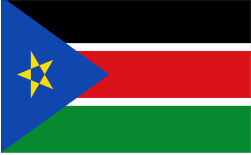
The history of South Sudan comprises the history of the territory of present-day South Sudan and the people inhabiting the region.
South Sudan seceded from the Republic of Sudan in 2011. Geographically, South Sudan is not part of the Sudan region at all (the Sahel), forming as it does part of Sub-Saharan Africa. In modern terminology, it does, however, include parts of the East Sudanian Savanna. Its inclusion in “Sudan” is due to the southward expansion of the Ottoman Khedivate of Egypt in the 19th century, and its consequent inclusion in Mahdist Sudan, Anglo-Egyptian Sudan and the Republic of Sudan during 1885 to 2011.
South Sudan is mostly inhabited by Nilo-Saharan speaking people, with Niger-Congo speaking minorities. Historically, what is now South Sudan was dominated by Central Sudanic speaking peoples, but the presence of Nilotic people can be assumed from pre-historic times as well. Since about the 14th century, following the collapse of the Christian Nubian kingdoms of Makuria and Alodia, the Nilotic people gradually came to dominate the region.
TANZANIA
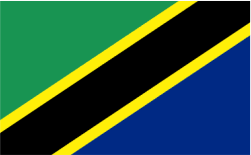
The African Great Lakes nation of Tanzania dates formally from 1964, when it was formed out of the union of the much larger mainland territory of Tanganyika and the coastal archipelago of Zanzibar. The former was a colony and part of German East Africa from the 1880s to 1919, when, under the League of Nations, it became a British mandate. It served as a military outpost during World War II, providing financial help, munitions, and soldiers. In 1947, Tanganyika became a United Nations Trust Territory under British administration, a status it kept until its independence in 1961. Zanzibar was settled as a trading hub, subsequently controlled by the Portuguese, the Sultanate of Oman, and then as a British protectorate by the end of the nineteenth century.
Julius Nyerere, independence leader and “baba wa taifa for Tanganyika” (father of the Tanganyika nation), ruled the country for decades, assisted by Abeid Amaan Karume, the Zanzibar Father of Nation. Following Nyerere’s retirement in 1985, various political and economic reforms began. He was succeeded in office by President Ali Hassan Mwinyi.
TOGO
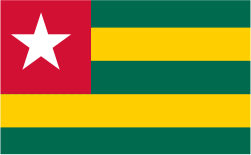
Little is known about the history of Togo before the late fifteenth century, when Portuguese explorers arrived, although there are signs of Ewe settlement for several centuries before their arrival.
Various tribes moved into the country from all sides – the Ewe from Benin, and the Mina and the Guin from Ghana. These three groups settled along the coast. The Portuguese built forts in neighbouring Ghana (at Elmina) and Benin (at Ouidah). Although the coast of Togo had no natural harbors, the Portuguese did trade at a small fort at Porto Seguro. For the next 200 years, the coastal region was a major trading center for Europeans in search of slaves, earning Togo and the surrounding region the name “The Slave Coast”.
UGANDA
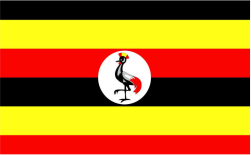
Britain granted independence to Uganda in 1962, and the first elections were held on 1 March 1961. Benedicto Kiwanuka of the Democratic Party became the first Chief Minister. Uganda became a republic the following year, maintaining its Commonwealth membership.
In succeeding years, supporters of a centralized state vied with those in favor of a loose federation and a strong role for tribally-based local kingdoms. Political maneuvering climaxed in February 1966, when Prime Minister Milton Obote suspended the constitution and assumed all government powers, removing the positions of president and vice president. In September 1967, a new constitution proclaimed Uganda a republic, gave the president even greater powers, and abolished the traditional kingdoms.
ZAMBIA
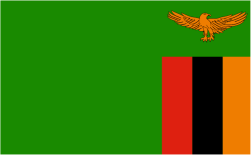
That archaic humans were present in Zambia at least 200,000 years ago was shown by the discovery of the Broken Hill skull in Kabwe in 1921 – this was the first human fossil ever discovered in Africa.
The earliest known modern humans to live in the territory of modern-day Zambia were the Khoisans. They were bushmen, hunter-gatherers who lived a nomadic life, with stone age technology. Mainly they collected fruit and nuts, but they also hunted antelope and other animals.
The Khoisans were the only inhabitants of most of Zambia until the 4th century, when Bantu started to migrate from the north. They had far more developed technology – they were farmers and had iron and copper tools and weapons, as well as knowledge of pottery-making. They lived in small self-sufficient villages of wattle-and-daub huts, growing sorghum and beans, as well as keeping cattle and goats.
The Tonga live in southern Zambia along the Zambezi River and are the earliest settlers among the modern ethnic groups in Zambia today. The name Tonga is apparently from a word in the Shona language that means “independent.”
Since the early farmers practised slash and burn agriculture, they had to constantly move further south when the soil was exhausted. The indigenous khoisans were either killed, assimilated into the new culture or displaced into areas not suitable for agriculture.
With the introduction of agriculture, the population grew and more and more land became cultivated. By the 11th and 12th centuries, a more advanced society was beginning to emerge. Even though most villages still were self-sufficient, long distance trade was developing. Copper mining was intensified, and copper crosses were probably used as a currency. Ivory was an export, and cotton textiles an import. One of the best-known archaeological sites for this period is Ing-ombe Ilede near Siavonga close to the Kariba Dam, uncovered in 1960. The increase in trade resulted in larger political units and more complex social structures.
ZIMBABWE
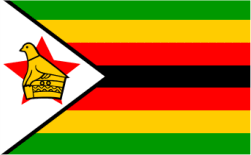
Following the Lancaster House Agreement of 1979 there was a transition to internationally recognised majority rule in 1980; the United Kingdom ceremonially granted Zimbabwe independence on 18 April that year. In the 2000s Zimbabwe’s economy began to deteriorate due to various factors, including mismanagement and corruption, the imposition of sanctions, such as among others the Zimbabwe Democracy and Economic Recovery Act of 2001, following the switch from Willing Buyer, Willing Seller to Fast Track land reform. Economic instability led several members of the Military of Zimbabwe to try to overthrow the government in a coup d’état in 2007. Prior to its recognised independence as Zimbabwe in 1980, the nation had been known by several names: Rhodesia, Southern Rhodesia and Zimbabwe Rhodesia.
Scanlen & Holderness (Memory Mafo)
Tel: (+263) 470 2561
GILL, GODLONTON & GERRANS (Mordecai Pilate Mahlangu)
Tel: (+263) 470 702 37 / 705 528- 30/34 / 707 028 / 708 094 / 707 224 / 707 686
GUINEA
Etude Legale Labile & Associates (Maitre KONE Aimé Christophe Labilé)
Tel:(+224) 655-65-30-50
Cell:(+224) 664-63-49-29
